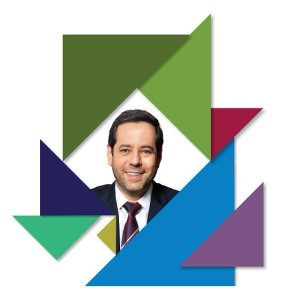Digital Compliance to Improve Health

STORY INLINE POST
Q: What significant trends are emerging in Mexico’s health industry and what role is technology playing?
A: There has been significant change related to patient centricity. Organizations in this sector need to look inward and develop a patient-oriented culture because patients look at the pharma industry as they would the tobacco industry: as if we were taking advantage of them. This is due to ethical issues related to clinical trials, the perception of abusive practices regarding medicinal costs and a general lack of services related to the provision of pills. However, there are opportunities beyond merely providing medical treatment. The development of collaborative models is a key step toward achieving patient centricity. Such models would help companies to improve their image and the level of health of the population while also achieving a reduction in costs.
To improve the industry’s image, several steps must be taken. First, we must ensure that patients know what is being done for them. They see a pill but not the effort in R&D and manufacturing behind it. Actively listening to them is another key step. That is something the industry is not used to doing, although it is aware of the necessity.
Involving the patient’s voice in the equation, going “beyond the pill” and making a holistic effort to offer integral solutions requires making changes within organizations. We should train our sales forces to move beyond the “science behind the drug” approach and educate physicians on the relationships they need to have with patients and how to offer more integral solutions. It is necessary to generate real-life and real-time information through technological platforms and to have this data corroborated by the patient.
IT enables patients to inform themselves about the pathologies they suffer and possible therapies, empowering them when physicians orient, monitor and help address their problems. Creating value in this model is possible through information technologies by, for example, using virtual reality to teach the patient the mechanics of both pathology and therapy.
Q: What benefits has Signufarma observed through the use of patient-oriented IT?
A: Signufarma’s hepatitis-C platform has been a positive achievement in terms of the information collected and patient monitoring. This protocol creates a treatment card that includes the complete treatment history: when it started, whether the patient followed a therapy beforehand and how the patient has evolved, all while maintaining the privacy of the patient’s personal information. The objective of these cards is to show how many patients have become permanently free of the hepatitis C viral load. In Mexico hepatitis C is not a well-identified health problem, so the program enables Signufarma and the National Institute of Medical Science and Nutrition Salvador Zubirán to measure the number of patients that start treatment and its success rate through monitoring and clinical tests. We expect to help more people by integrating more health-sector institutions into the program.
Q: What is your strategy for sales and what results have you seen?
A: Signufarma’s direct sales model enables us to do several things. First, deliver medicine of a guaranteed standard to the homes of chronic patients or to their doctor’s office, which enables us to keep a record of a patient’s intake. We deliver the exact prescribed product in the correct dosage, preventing the problem of prescription substitution. Second, monitoring the patient has increased our sales in certain chronicdegenerative areas between 20 and 25 percent. Patients provide feedback about their specific needs, particularly in oncologic and chronic-degenerative therapies. Third, Signufarma provides patients with commercial options such as deferred payments and discounts. We increased our sales because we take better care of patients.






















